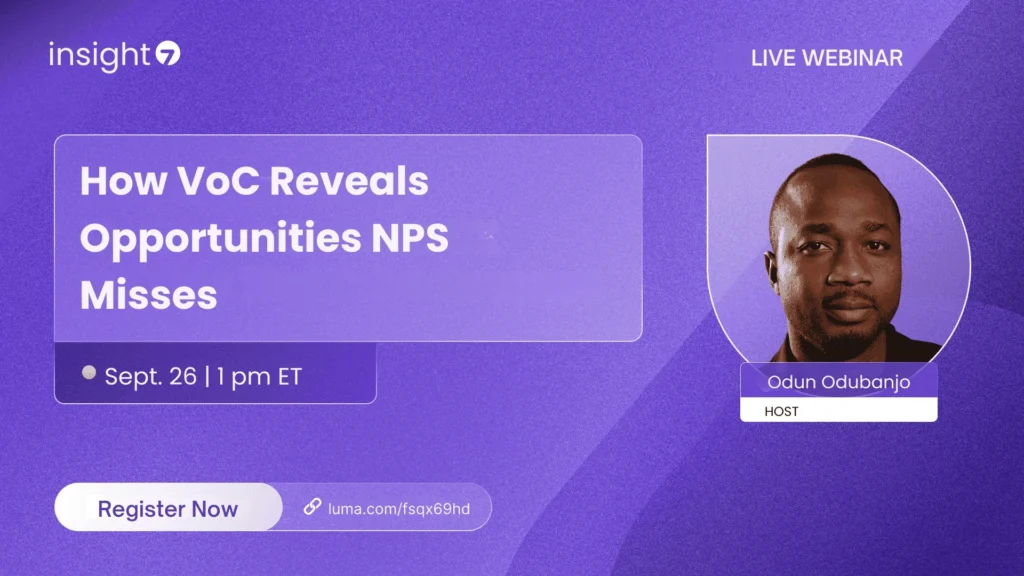How to Validate Your Voice of Customer Hypotheses With QA Trends
-
Bella Williams
- 10 min read
Understanding customer insight validation is crucial in today’s competitive market. Companies increasingly gather customer signals at scale, yet traditional analysis methods often fall short. This section explores how quality assurance (QA) trends play a pivotal role in validating the voice of the customer hypotheses. By ensuring data reliability, businesses can make informed decisions that align with customer needs and expectations.
Before diving into validation techniques, it’s essential to recognize the significance of blending QA trends with customer insights. The emerging landscape highlights the importance of timely data analysis and the collaboration necessary to transform insights into actionable strategies. Understanding these dynamics sets the stage for more effective customer engagement and a deeper connection to customer preferences.
Analyze & Evaluate Calls. At Scale.

The Importance of Customer Insight Validation in Voice of Customer Strategy
Validating customer insights is crucial for an effective Voice of Customer strategy. It ensures that the company aligns its offerings with genuine customer needs and expectations. By systematically validating these insights, businesses can make informed decisions, respond to customer feedback accurately, and foster stronger relationships. Without such validation, organizations risk basing strategies on assumptions rather than concrete data, leading to wasted resources and missed opportunities.
Moreover, leveraging customer insight validation enhances the credibility of the conclusions drawn from quality assurance trends. This process allows companies to cross-check feedback against existing data, ensuring that insights are not only accurate but also comprehensive. As a result, organizations can adapt their strategies in real-time, staying ahead of competitors and consistently meeting customer demands. Validating insights transforms raw data into actionable strategies, ultimately driving long-term success.
Aligning Voice of Customer Hypotheses and QA Trends
Understanding the alignment between Voice of Customer hypotheses and QA trends is critical for effective customer insight validation. When organizations gather customer feedback, it often reveals broader patterns and sentiments. Integrating this feedback with quality assurance data helps identify discrepancies between what customers want and what they experience. By cross-referencing customer insights with QA findings, businesses can ascertain whether their hypotheses reflect the true customer experiences.
To achieve a meaningful alignment, consider the following steps:
- Identify Key Customer Signals: Focus on sentiments and themes that frequently arise in customer interactions.
- Analyze QA Metrics: Use quality assurance data to evaluate service delivery and product quality.
- Cross-Reference Findings: Align customer feedback with QA trends to validate or refine hypotheses.
By applying these strategies, businesses can create a dynamic feedback loop. This not only enhances the accuracy of customer insights but also informs actionable improvements in products and services.
Ensuring Reliability Through Quality Assurance Insights
To ensure reliability in Customer Insight Validation, it's crucial to adopt a systematic approach that harmonizes customer feedback with Quality Assurance (QA) insights. By integrating these elements, businesses can enhance their understanding of customer needs and preferences. Reliable QA data acts as a foundation for validating voice of customer hypotheses, allowing companies to identify genuine trends and transform insights into actionable strategies. This systematic validation mitigates the risk of biased interpretations, ensuring that the insights derived are both relevant and representative.
Moreover, QA insights facilitate efficient data collection and analysis, leading to smoother collaboration across teams. As customer conversations become more nuanced and complex, maintaining accuracy in understanding these interactions is paramount. An effective validation process not only aligns customer perceptions with organizational objectives but also enhances the quality of service delivered. Investing in this approach positions businesses to respond more adeptly to evolving customer expectations, ultimately fostering stronger relationships and driving growth.
Practical Steps for Validating Your Customer Insight Hypotheses
To validate your customer insight hypotheses effectively, begin by gathering Quality Assurance (QA) data that reflects customer interactions and feedback. This foundational step ensures that the insights you're analyzing are grounded in real-world experiences. Focus on collecting diverse data points, including customer responses, complaints, and positive feedback. This comprehensive overview will help you understand customer sentiments and pinpoint areas for improvement.
Next, map your gathered data to specific customer feedback themes. Identifying patterns between the two can reveal where your insights align or diverge. After mapping, analyze the insights for consistency and prevalence of trends. Record any significant findings that emerge. Once you pinpoint reliable insights, implement changes based on your findings and continue to monitor customer reactions. This systematic approach to customer insight validation will foster a deeper understanding of customer needs and guide your strategic decisions.
Extract insights from interviews, calls, surveys and reviews for insights in minutes
Step 1: Collecting Quality Assurance Data
To initiate the process of validating your customer insight hypotheses, begin with the collection of quality assurance data. This data serves as the foundation for uncovering trends that align with customer feedback. Gathering this information requires specific steps to ensure accuracy and relevance. Start by identifying your data sources, including recorded calls, chat transcripts, and email communications. Each source provides unique insights into customer experiences and interactions.
Next, establish evaluation criteria tailored to your business needs. This can include compliance checks, customer engagement levels, and overall issue resolution effectiveness. By customizing these criteria, you can better assess the quality of customer interactions. During this phase, ensure that you compile the data systematically for analysis. This groundwork allows for informed decision-making and helps validate your voice of customer hypotheses through actionable insights derived from quality assurance trends.
Step 2: Mapping Data to Customer Feedback
Mapping data to customer feedback is a crucial step in the journey toward Customer Insight Validation. By carefully examining the feedback received from customers, you can gain valuable insights that inform your product development and overall strategy. The key is to categorize feedback into themes, distinguishing between positive comments and areas needing improvement. This structured approach allows you to identify patterns and trends that can shape future decisions.
A systematic analysis helps in visualizing data for better understanding. You can utilize tools to extract significant insights from the feedback, focusing on both qualitative and quantitative data. For instance, comparing feedback across different regions might reveal unique preferences among various customer segments. Such insights are instrumental in refining your offerings and ensuring they meet the evolving expectations of your audience. In essence, this mapping process is not only about analyzing feedback but also about transforming that feedback into actionable strategies.
Step 3: Analyzing Insights for Consistent Trends
To analyze insights for consistent trends, begin by collecting all relevant data from your quality assurance efforts. The objective is to unify data points from various customer interactions to identify prevailing themes. By evaluating patterns from multiple sources, you reveal insights that help validate your voice of customer hypotheses effectively.
Once you have compiled your data, categorize it according to key pain points, suggestions, and recurring queries. This step allows you to pinpoint significant trends within the feedback. For instance, you might find that specific issues are frequently mentioned, or certain features are repeatedly requested. By summarizing and visualizing these insights, you can better understand customer needs and preferences, ensuring that your voice of customer strategy is aligned with actual experiences. Continuous analysis will facilitate ongoing adjustments to your approach, ultimately enhancing customer satisfaction and loyalty.
Top Tools for Effective Customer Insight Validation
Employing the right tools is essential for effective customer insight validation. These tools enable businesses to gather, analyze, and interpret customer feedback efficiently. By using platforms such as insight7, you can automate the process of analyzing large volumes of customer conversations, allowing for timely decision-making. Similarly, tools like Qualaroo and UserTesting facilitate the collection of insights directly from users, ensuring that feedback is relevant and actionable.
SurveyMonkey and Typeform offer user-friendly interfaces for conducting surveys, making it easy to collect feedback across various demographics. Meanwhile, Medallia specializes in aggregating customer insights from multiple sources, which helps in identifying trends and pain points quickly. Together, these tools streamline the validation process, ensuring that customer insights lead to informed business strategies. Ultimately, using effective tools for customer insight validation can significantly enhance your organization's decision-making capabilities and competitive edge.
insight7
The effectiveness of validating customer insights largely depends on how well organizations can connect qualitative data from customer interactions with quantitative quality assurance trends. To accomplish this, it is essential to implement a systematic approach. Firstly, capturing and categorizing customer feedback is paramount. Utilize tools that allow you to gather QA data seamlessly, ensuring that responses reflect the sentiments and needs of customers accurately.
Next, it is vital to analyze these insights collectively. Look for recurring themes and trends that arise from customer input and correlate them with QA metrics. This helps in identifying gaps between customer expectations and actual service delivery. Ultimately, customer insight validation isn't just about gathering data; it’s about transforming that data into actionable strategies. Ensuring this alignment will strengthen your Voice of Customer initiatives and propel your organization ahead of the competition in understanding customer needs.
Qualaroo
Qualaroo plays a pivotal role in the process of Customer Insight Validation. By providing targeted feedback opportunities, it enables companies to gain real-time insights directly from customers. This immediate access to consumer opinions helps confirm or challenge existing hypotheses, making it a valuable resource for teams aiming to understand their audience better.
To effectively utilize this tool, businesses should focus on a few key strategies. First, they need to craft specific questions that align with their Voice of Customer (VoC) objectives. Next, integrating feedback from these interactions with current QA data can reveal patterns and discrepancies that necessitate further exploration. Finally, interpreting the gathered data helps solidify or refine insights that guide decision-making processes. Employing these strategies ensures a comprehensive approach to validating customer insights amidst evolving market trends.
UserTesting
UserTesting plays a pivotal role in validating customer insights derived from feedback. By observing real users interact with a product or service, you can gather authentic reactions that reveal underlying sentiments. This method enhances your understanding of customer preferences and pain points, providing crucial data that informs your business strategies.
One effective way to utilize UserTesting is through structured sessions where real customers engage with your offerings. First, prepare a set of tasks for participants that encourage authentic behavior and feedback. Next, observe the interactions to capture spontaneous responses and emotional reactions. Finally, analyze the recorded sessions for patterns in behavior that align with your hypotheses. Balancing these insights with quality assurance data ensures you are capturing a comprehensive view of customer experiences. By systematically employing UserTesting, you can strengthen your customer insight validation and make informed decisions that drive continuous improvement in your services or products.
SurveyMonkey
Survey tools play a crucial role in the process of Customer Insight Validation. One popular choice is a platform that allows businesses to create surveys easily, gathering valuable feedback from customers. This platform streamlines the collection of insights, helping identify trends and patterns that are essential for validating voice of customer hypotheses.
Businesses can utilize this tool to ask open-ended questions, enabling respondents to express their thoughts freely. This qualitative feedback adds depth to quantitative data, highlighting areas that may need attention. By analyzing the responses, organizations can correlate the insights with existing Quality Assurance (QA) trends, ensuring that their customer service and product offerings align with what customers truly want. Ultimately, this approach leads to more informed decisions and improved customer satisfaction.
Medallia
Medallia is a powerful platform designed to enhance customer experience by capturing and analyzing feedback. With its tools, organizations can effectively validate their Voice of Customer hypotheses, ensuring insights are reliable and actionable. By methodically assessing customer feedback against established QA trends, businesses can better understand their clients' needs and expectations.
The platform's capabilities extend beyond standard feedback collection; it also enables businesses to track evolving customer sentiments over time. This dynamic approach allows teams to identify emerging patterns, which is crucial for making informed decisions. Additionally, integrating the insights from Medallia with other operational data can foster a comprehensive view of customer interactions, ultimately driving strategic enhancements and innovation in service delivery. By prioritizing customer insight validation, companies become more adept at meeting consumer expectations and cultivating loyalty.
Typeform
Typeform is an excellent tool for gathering customer insights, particularly for validating hypotheses related to user experiences. By utilizing its user-friendly interface, businesses can design interactive surveys that engage customers and encourage meaningful feedback. This dynamic format allows organizations to explore customer thoughts deeply, ensuring that the insights gathered are both relevant and actionable.
Incorporating Typeform into your workflow enables the efficient collection of data, which is essential for customer insight validation. The adaptability of Typeform means you can tailor questions to match specific customer journeys, enhancing the relevance of the data received. By analyzing this information alongside QA trends, businesses can identify truths and patterns that affirm or challenge existing assumptions. Ultimately, Typeform serves as a bridge, connecting valuable customer feedback with strategic decision-making processes, ensuring continual improvement in service delivery.
Conclusion: Leveraging Quality Assurance for Customer Insight Validation
Quality assurance plays a crucial role in validating customer insights, directly impacting how businesses understand and respond to their customers. By analyzing QA trends, organizations can uncover patterns that help validate their voice of customer hypotheses. This approach not only boosts reliability but also enhances the effectiveness of customer feedback analysis.
Incorporating these insights allows companies to make informed decisions, ensuring they meet customer expectations. Ultimately, aligning quality assurance with customer insights leads to a more robust strategy that drives customer satisfaction and fosters long-term loyalty. Embracing this methodology can create a competitive advantage in today’s dynamic marketplace.







